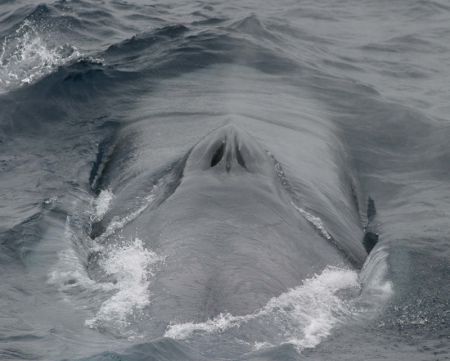Did you know the very first blue whale research organization in the world was founded right here in Atlantic Canada? They opened their doors in 1979 on the north shore of the Gulf of St Lawrence and for the last 36 years, they’ve been pioneering our understanding of the largest animals on Earth.
They’re called the Mingan Island Cetacean Study (MICS) and they gave us our first real look at marine mammals in the Gulf of St Lawrence. Its founder, Richard Sears, saw a need for this research during a visit to the Mingan Islands back in 1976, a time when very little was being done on our coast.
MICS built the first catalogues of humpback, finback and minke whales in Atlantic Canada and the first blue whale catalogues anywhere in the world. From their work we learned things about population, distribution, migration, feeding grounds, birth rates and plenty more, knowledge essential to understanding and preserving these animals, many of whom are endangered.
In a recent conversation with Richard, I asked about their earlier days of studying the Gulf, back when their insurance was cheaper, the staff was smaller, the boats were more conservative and science funding was plentiful. Well…plentiful enough.
Besides securing the occasional contract or grant to keep their research going over the years, MICS championed their own form of ecotourism, inviting people to come join them as they scoured the ocean in pursuit of whales. For a week or so, people could take part in MICS’ research, getting first hand experience in the Gulf of St Lawrence or the Azores. Folks could even “adopt” some of the whales MICS’ had identified, contributing to research in the process. This is how they’ve supported themselves for 36 years and still do.
Things aren’t so simple anymore, not for independents like MICS. Costs have gone up and funding has plummeted. So, why am I telling you the life story of the Mingan Island Cetacean Study, an independent group of scientists waging war against ocean ignorance? I’m tell you because, much like the endangered species profiled in this column, MICS is at risk of disappearing from our coast.
Richard told me it takes between $200,000 - $250,000 a year to run the MICS research station properly, so their staff can continue answering questions most of us wouldn’t even know how to approach. At the moment, they have less than half that for 2015.
Without their work, the blue whale and other cetaceans might still be falling victim to our ignorance here in Atlantic Canada…and as any whale expert will tell you, we still have much to learn about these gentle giants.
On March 16 at the Montreal Biodome, MICS will be hosting a fundraising event affectionately called The Grand Blue, at which there will be food, tunes, an auction and the people who, past and present, made MICS a reality.
Too often, when we look through the lens of endangered species, we’re filled with helplessness, a burning desire to set things right without knowing how best to do so. Supporting the Mingan Island Cetacean Study is exactly how we can do so. Their work calls attention to areas of research which might otherwise be ignored. I myself have learned volumes from them in the last year and recognize the important role they play on our coast.
I encourage you to visit their website (www.rorqual.com) and learn about these people, their fundraiser in Montreal, their ride-alongs, their adopt-a-whale, their research and all the rest. They do important work and the Gulf would be a misunderstood stretch of sea without them.



